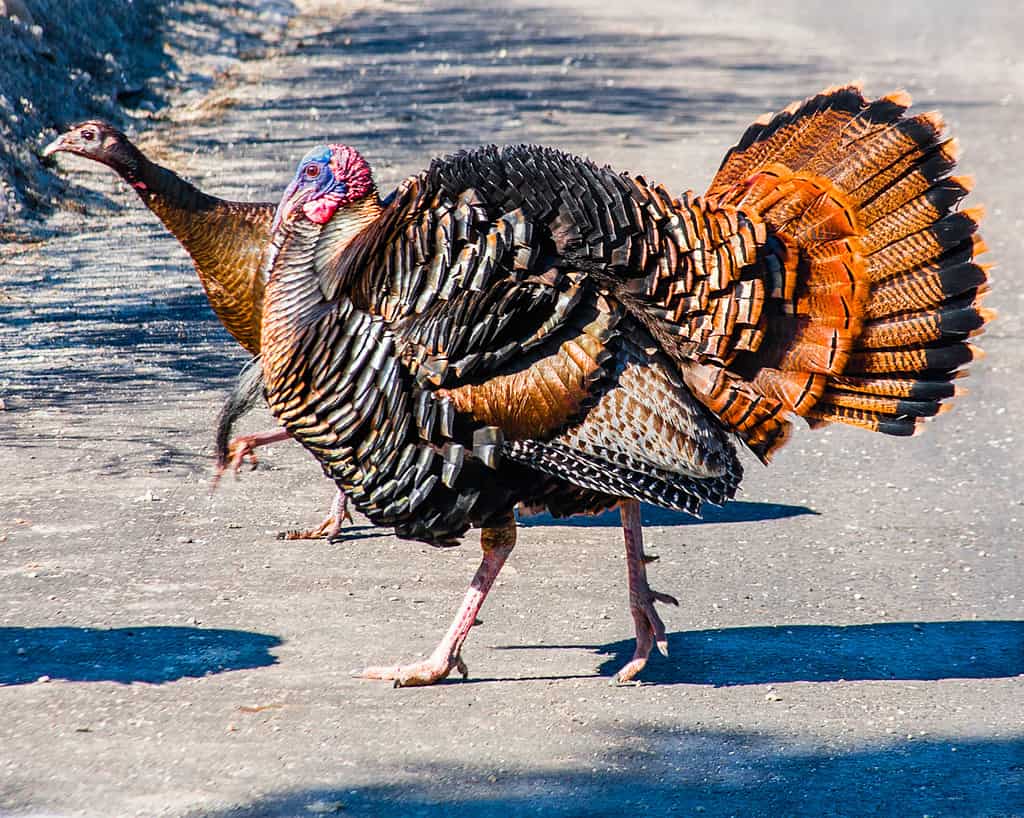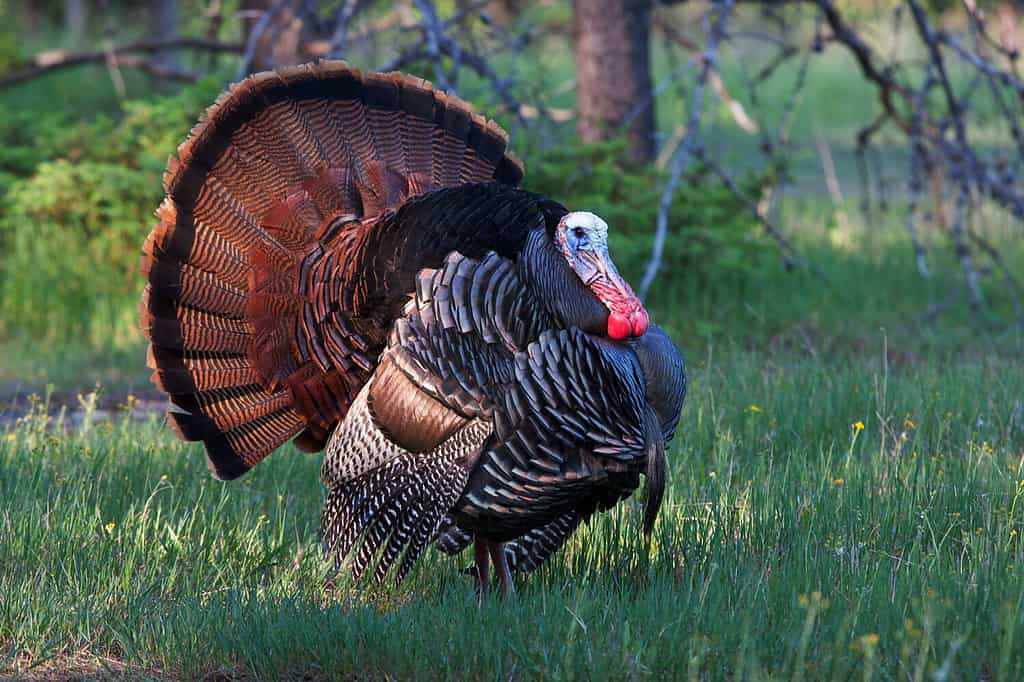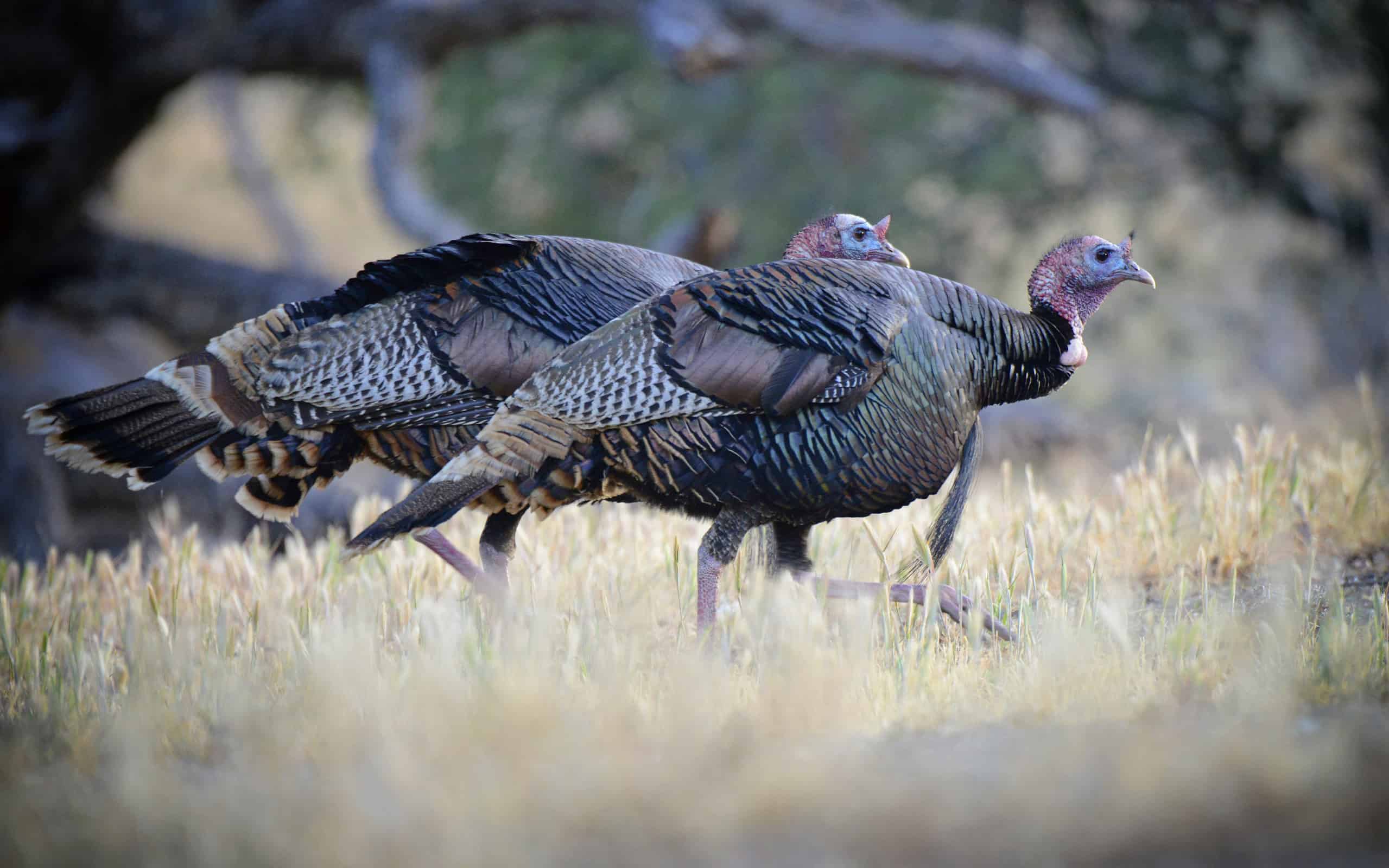Party Fowl!

The turkey is an intelligent bird that is directly related to dinosaurs. The wild turkey can run quite fast when needed.
©Paul VanDerWerf (Me in ME) / CC BY 2.0, Flickr – Original / License
Turkeys can run surprisingly fast. Wild turkeys, according to numerous sources, can apparently reach 25 miles per hour in a sprint along the ground. There may be some rugged, free-range domesticated turkeys that can get off the ground. But generally, only wild turkeys can fly. How fast can turkeys run and how fast can turkeys fly? When they run or fly, they can hit 25 and 50 miles per hour, respectively.
How Fast Can Turkeys Run? Prove It
Many US cities and towns will have “Turkey Trots” on Thanksgiving day; a day when this bird is the main course. It’s a five or ten-kilometer foot race to raise funds for charities and to offset the caloric intake of a large, rich meal. In those trots, anyone with a pedometer or just a watch can get a very accurate reading on how fast they trotted.
Despite humans having accurate speed measurements on Turkey Day, few turkeys have had their speed clocked and recorded. But we do have one example.
At Least One Creative Couple Recorded Some Turkeys at High Speed
Two people in California followed a trio of wild turkeys in a car along state Route 6 for a solid minute. By the speedometer, they confirmed the springy birds were doing 17 miles per hour. Uphill!
Giving Chase
Hunters and biologists note that a turkey is most likely to run when they are spooked. Being large with brightly-colored head plumage, the turkey has many natural predators like coyotes. The birds have strong hearing and remarkable vision to alert them to threats. They are cautious creatures; when they feel threatened, they will take off in a dead sprint, going 20 to 25 miles per hour.
The Playing Field and Weight Class Affect Speed

In a flat meadow with lower vegetation—this adult turkey has all the conditions for a fast sprint.
©Jim Cumming/Shutterstock.com
How fast can turkeys run? Pretty fast, but it still depends on some other variables.
The ground coverage, moisture, vegetation, topography, and related factors will naturally determine the top running speed of the turkey. The 17 miles per hour informal record in California was recorded on a smooth, flat highway. A turkey dashing uphill in a thick forest on a rainy autumn day will be slower than that West Coast sprint.
Male and female turkeys have slightly differing physiology, particularly in their legs and feet. All mature turkeys will be quicker than a young “jake” or pre-adolescent turkey that doesn’t have all their musculature grown in.
Biology and Running Speed of the Turkey
However, they are built to run. They have comparatively large feet with three toes, particularly a long middle toe. Male turkeys have a spur claw on the back of their feet. The long, powerful feet and toes with the sturdy “hock” and “shank” in their muscular legs give them some serious oomph in their ground game.
Turkeys can, indeed, swim. However, their regal plumage of large and plentiful feathers quickly gets heavy, so they can only navigate short distances in the water.
How Fast Can Turkeys Fly?

Wild turkeys can indeed fly short distances.
©Kerry Hargrove/Shutterstock.com
Many turkeys, despite the bulkiness of their species, can fly. Yet, nearly all domesticated turkeys cannot fly. They’re bred to be larger so as to produce more meat. As such, they are heavier and taller than wild turkeys. But the wild ones do fly.
According to a wind energy firm, the Meleagris gallopavo, or wild common North American turkey, has the best type of wings for a short, quick lift. The camber, or spiraling of the feathers along the horizontal span of the wing, makes for a sharp lift. This gets the turkey out of tough spots, like a nearby predator, in a hurry.
That’s a Regional Flight
Turkeys don’t fly very far. They only go about a quarter-mile at a time. However, they make it count—they can fly at 55 miles per hour!
They’ll often ascend into trees for a safer roost at night. Their wings, made for velocity, don’t get them too high, but they get them where they need to go.
Talking Turkey, What Kind Are We Talking about?
There are a variety of turkeys, but they come from a bird domesticated thousands of years ago in Meso-America. Brought back to Europe by the Spanish, this big bird returned to the Americas with the Pilgrims. Despite that, the scant historical records of the exact menu for the First Thanksgiving table do not list Turkey!
You Wanna Race?

Wild turkeys are built more for running than flying.
©Pitofotos/Shutterstock.com
In land speed, they’re quite fast. For North America, they’re a particularly swift ground animal, at least for a bird.
As for that turkey trot? Anyone who can do a 5k in 20 minutes- a “sub-20”-is going about 9 miles per hour. That’s very fast for humans but still well below the wild turkey!
Move It!
The turkey is set up to get a move on when they have to. And that’s often. They’re easy to see and quite large. But when they do run or fly, they really make it count!
Thank you for reading! Have some feedback for us? Contact the AZ Animals editorial team.








